Successfully recruiting diverse early-career talent requires an intentional approach. Although students from underrepresented backgrounds want many of the same things in a job as Gen Z overall—starting with stability and salary—their concerns, priorities, and goals also differ in some important ways. Our research reveals three things to know about how women and students of color (including Asian, Black, and Hispanic students) are feeling in 2023, and what they’re looking for from employers:
- Students of color are more likely to prefer remote work and are submitting significantly more of their applications to fully-remote roles. More than 70% of Asian, Black, and Hispanic students want to work remotely at least some of the time, compared to 65% of white students.
- Students of color make up an increasing share of tech majors and are eager to keep developing their tech skills. Compared to white students, Asian, Black, and Hispanic students are 1.5-2X as likely to say they’re planning to build software engineering and cybersecurity skills in the next few years.
- Women and students of color are more likely to be adjusting their job search in response to economic uncertainty. 65% of women say they’re prioritizing stability over a dream job in light of news about the economy, compared to just 56% of men.
Students of color are more likely to prefer remote work.
Only about a fifth of Asian students and a little over a quarter of Black and Hispanic students say their ideal work arrangement is fully in-person, compared to more than a third of white students. And while a majority of students across all races prefer hybrid work, there is a distinct racial gap when it comes to what “hybrid” ideally means. White students are more likely to say they’d want to work remotely about 25% of the time, while students of color are more likely to say they’d want to be remote 50% of the time or more.

These preferences have a clear impact on students’ job application decisions. Students of color submit a significantly larger share of their applications to remote roles, and this is especially true for Black students, who submit more than a quarter of their applications to fully-remote jobs.
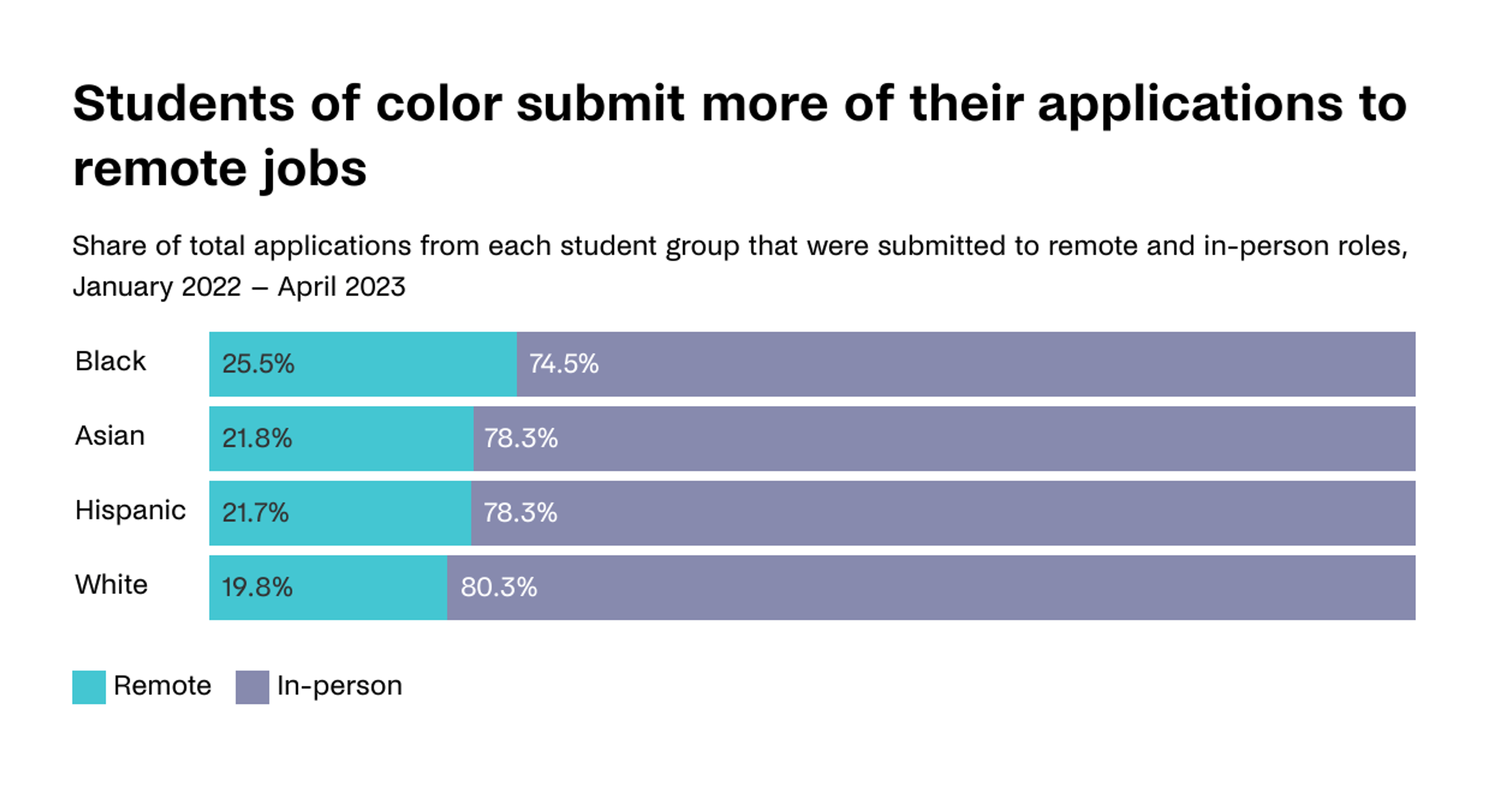
Students of color may prefer remote work for a variety of reasons. Since COVID-19, many people of color have shared that they feel more comfortable working from home because they face less day-to-day racial bias and feel less pressure to assimilate to white-dominated workplace norms. In our qualitative survey responses, students of color also mentioned family obligations and concerns about the feasibility of commuting as reasons for preferring remote work:
- "Working remotely is more comfortable for me as a Muslim woman. It allows me to practice my religion freely without having to worry about discrimination or having to compromise my religion to fit in with traditional professional attire."
- "Working remotely would help me because I don’t have transportation right now."
- "I am the one who picks my siblings up and drops them off at school when both of my parents are working, so I prefer a remote job since it allows me more flexibility."
Despite their stronger preference for remote work, a majority of students of color say they believe working in person will advance their career faster than working remotely. This tension speaks to a range of actions employers can take to help level the playing field for young employees of color—such as providing bias training and other programs to make in-person workplaces more welcoming and inclusive, offering financial support and flexibility to reduce the burden of commuting, and ensuring all employees get access to mentorship and development opportunities regardless of where they work.
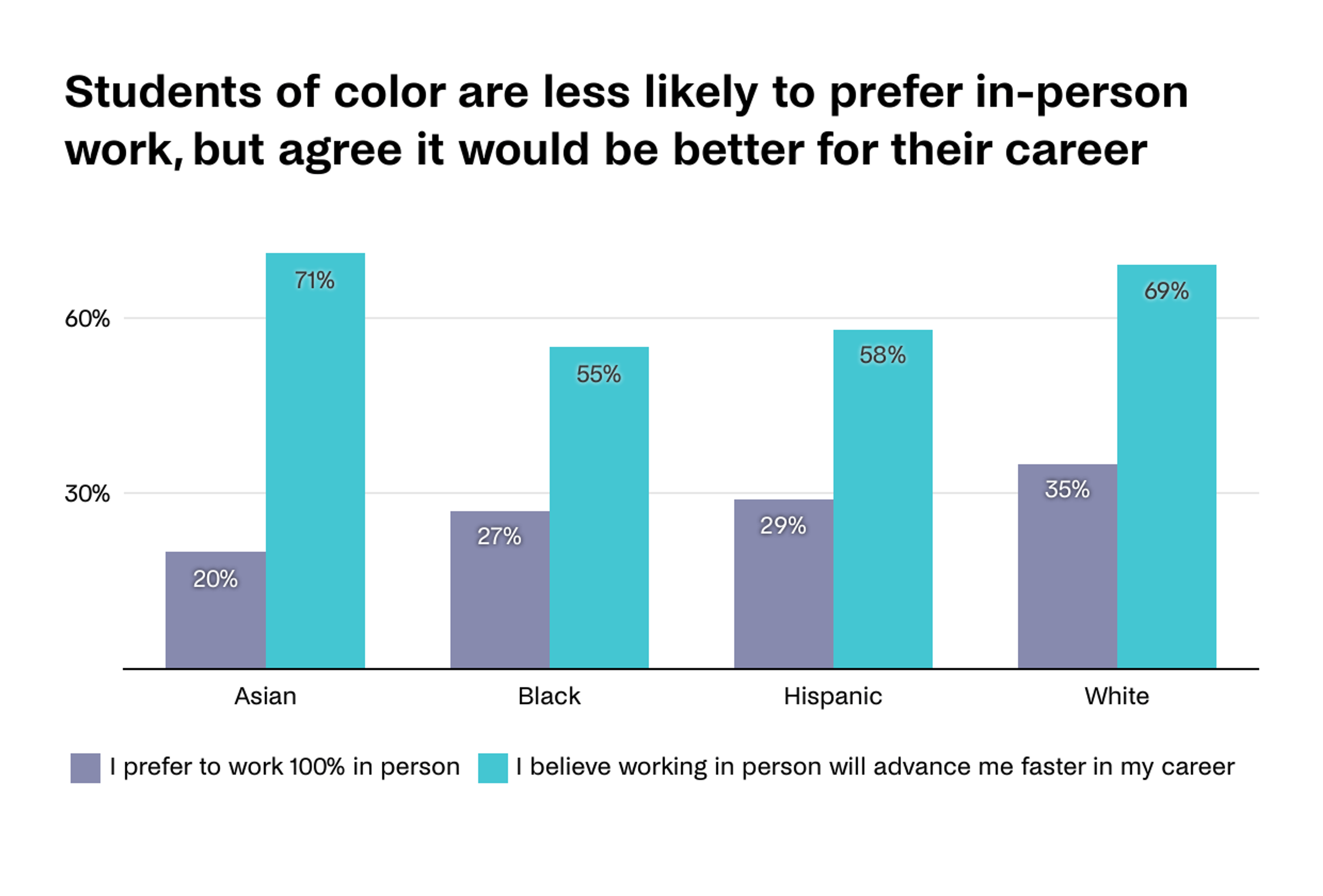
Students of color are eager to develop their tech skills.
Over the past five years, we’ve seen an increase in students of color majoring in tech fields. White students accounted for only 35% of tech majors graduating in 2023, compared to 43% in 2019, and almost 20% of this year’s tech graduates are Black or Hispanic.
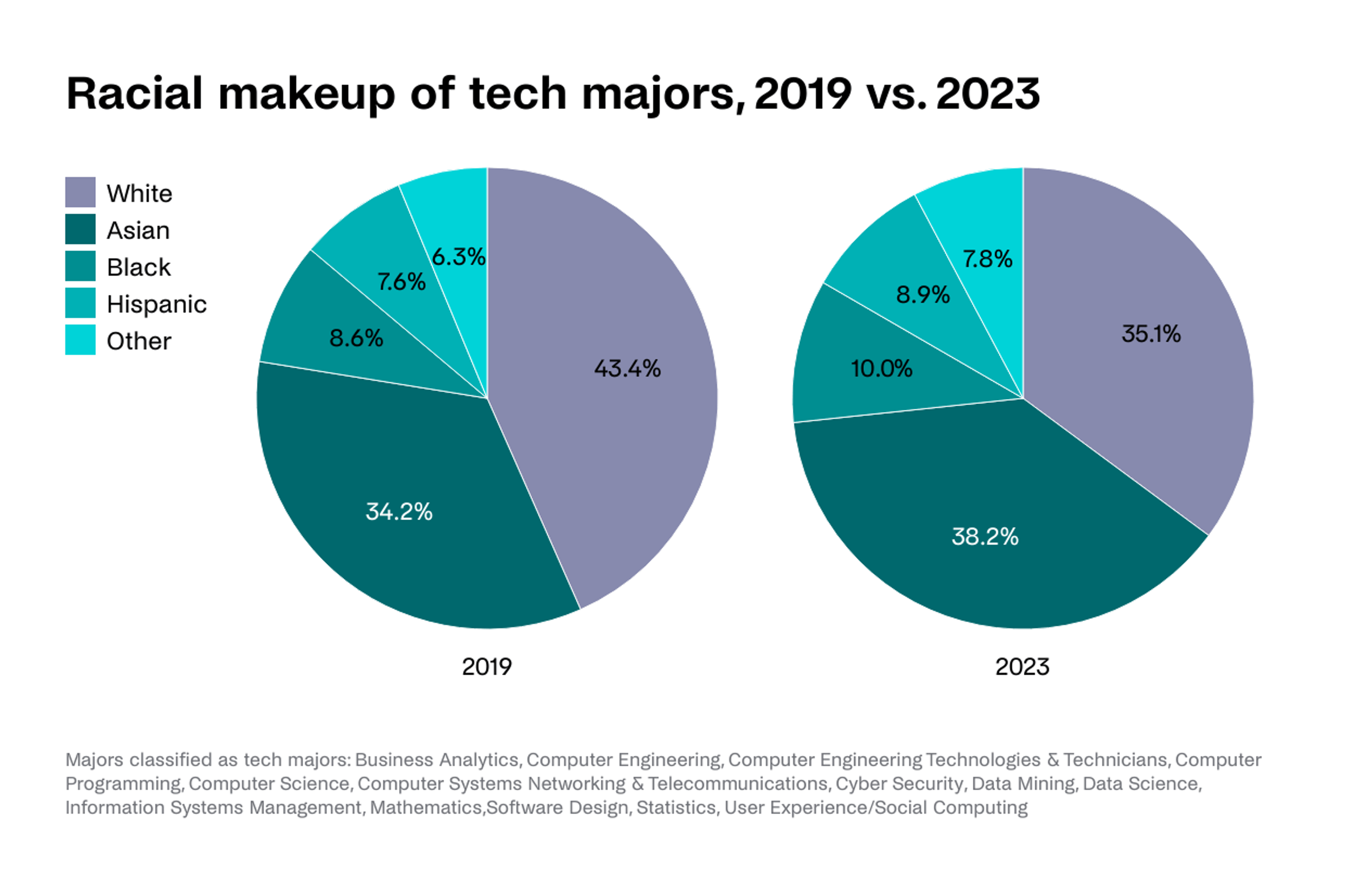
These students aren’t stopping at graduation. Students of color are 1.5-2X as likely as white students to say they’re planning to develop software engineering and cybersecurity skills in the next few years, and significantly more likely to say they plan to develop skills in AI, business analytics, and IT. This is good news for employers looking to diversify their tech talent pipelines—and yet another reason to target students with diverse backgrounds in early tech talent recruiting.
Read more about how early-career tech talent is navigating the job search.
Women and students of color are more likely to be adjusting their job search in response to economic uncertainty.
Women* and people of color were hit hardest in the economic fallout from COVID-19, so it’s not surprising that students who belong to these groups are more concerned about a looming recession now. Compared to men, women students are more likely to say news about the economy has led them to apply to more jobs, sooner, and to open their job search to more industries, companies, and roles. A similar trend holds when comparing students of color to white students.
*Although our sample size is too small to report specific data on non-binary students’ experiences, it is worth noting that we see similar trends in how women and non-binary students are responding to economic uncertainty.
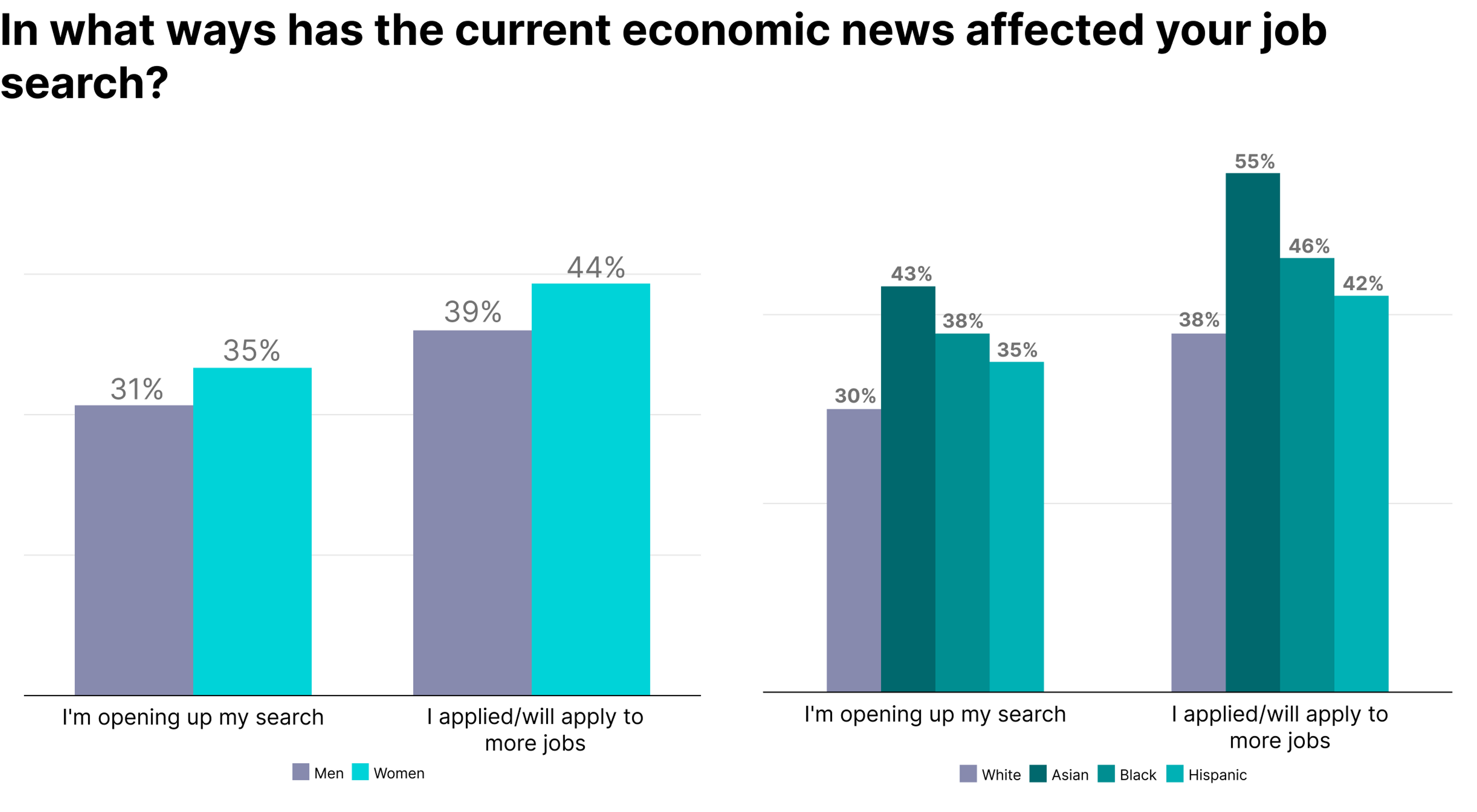
Women are also more likely than men to say they’re ruling out certain jobs, starting their search sooner, and prioritizing stability over a dream job.
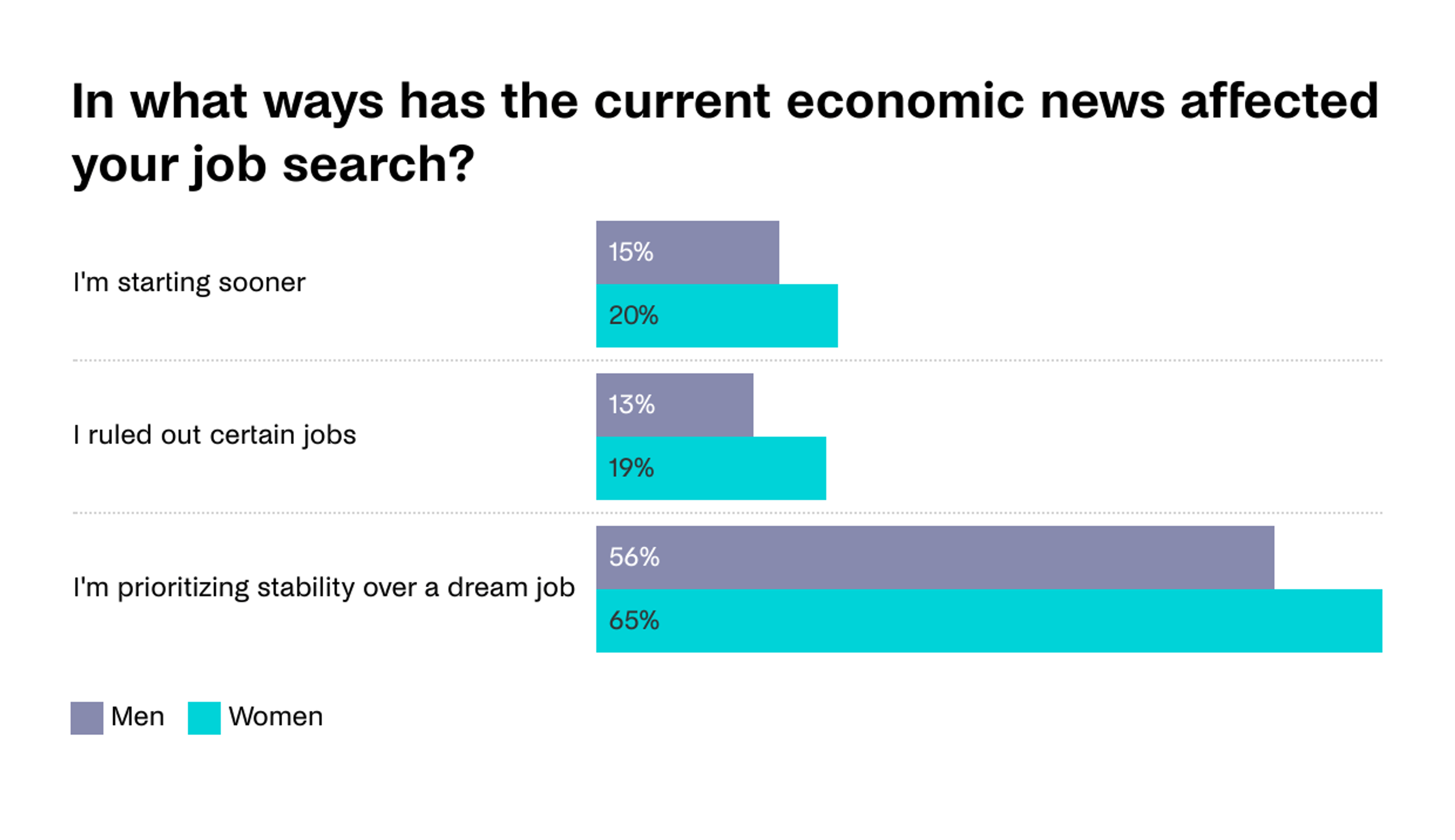
Many of these gender and racial gaps are even more pronounced among students who are graduating this year. Thirty eight percent of women in the class of 2023 have opened up their job search, compared to just 29% of men. And more than half of students of color are applying to more jobs, compared to just 41% of white students.
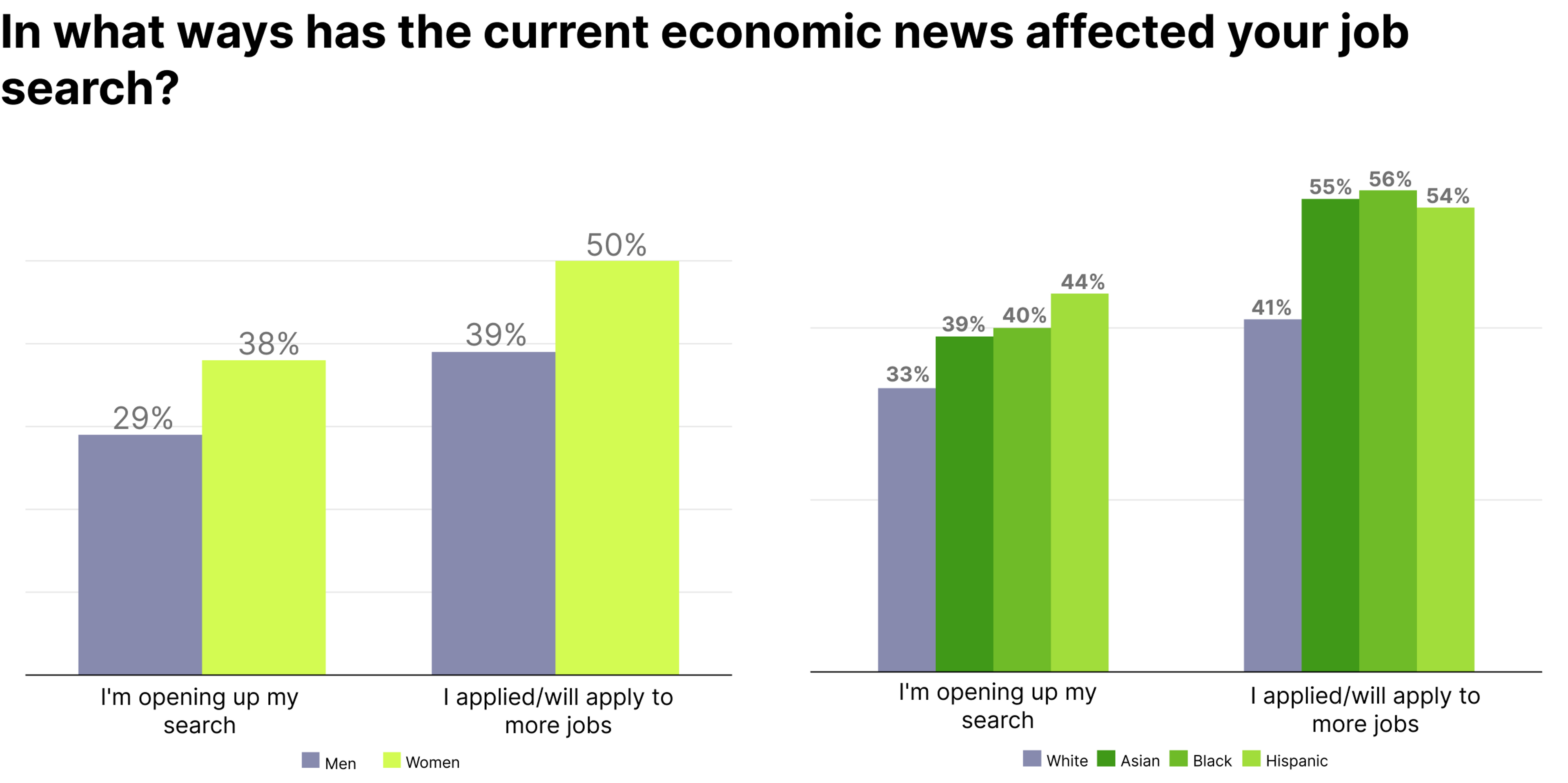
For more on how the class of 2023 is navigating economic uncertainty, read our latest Handshake Network Trends report: The class of 2023 prepares for a future of work, disrupted.
All employers can benefit from better understanding diverse early-career talent.
Companies are hiring from an increasingly diverse talent pool—over 50% of 2023 graduates on Handshake are women, and fully half are students of color. Increasing representation of students of color can also help improve other aspects of diversity—for example, more than a third of Asian students, half of Black students, and two-thirds of Hispanic students are first-generation college graduates. And diversity has a positive ripple effect when it comes to recruiting students of all identities and backgrounds. A majority of early-career job seekers are more likely to apply to a company with a strong diversity record.
For more tips and insights on recruiting underrepresented talent, explore DEI resources for employers on the Handshake blog.
Methodology
Student sentiment data including sentiment related to remote work, skill development, and economic uncertainty, is based on a survey of 3,809 randomly-selected students on the Handshake network. Surveys were completed between March 3-17, 2023, and the sample was limited to students attending four-year higher education institutions.
Remote job application data is based on applications to full-time jobs on the Handshake platform from bachelors degree students between January 1, 2022 and January 1, 2023. Remote jobs are classified as such by employers
Academic majors data is based on reporting from students and higher education institutions on the Handshake platform.
